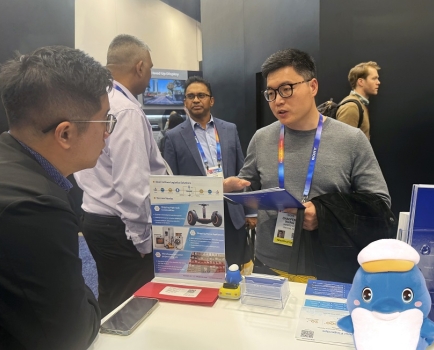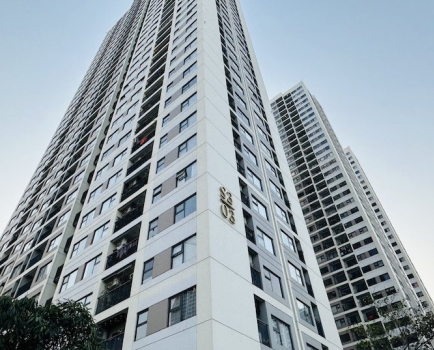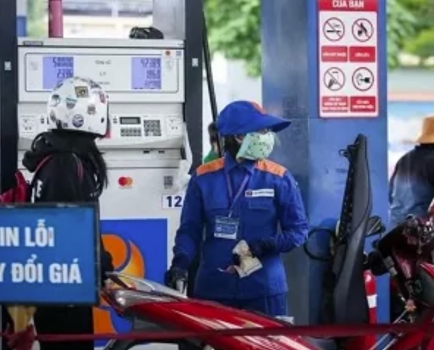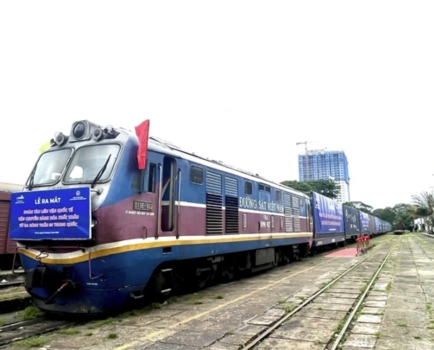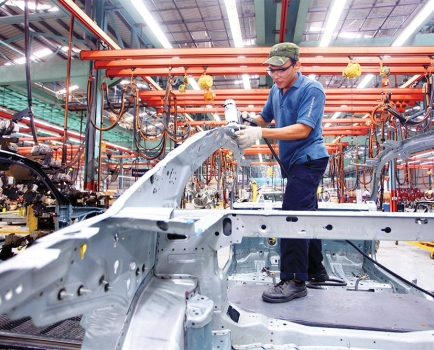Experts call for clear rules to prevent ramming incidents on South China Sea
Thu, 20 Jun 2019 14:53:00 | Print | Email Share:
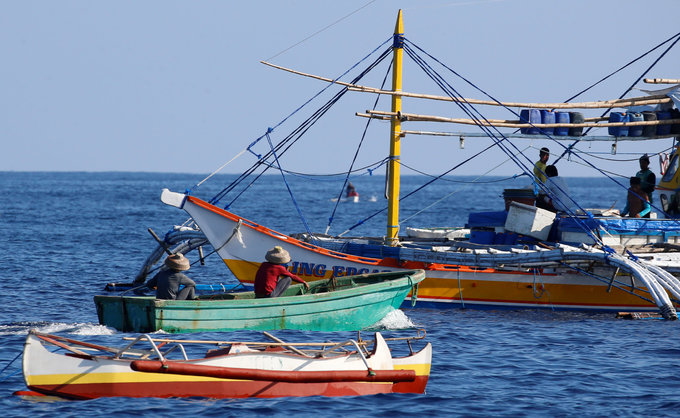
Scarborough Shoal in the South China Sea. Photo by Reuters/Erik De Castro.
ASEAN and other relevant entities should devise clearer rules on how boats should operate in the South China Sea, experts say.
The rules, which would govern how boats operate at sea, should specifically aim at preventing incidents like ramming, Dr. Andrew Chubb of Princeton University told VnExpress.
Chubb highlighted the recent case of a Chinese vessel ramming a Filipino boat near the Reed Bank in the South China Sea last week as an example. After their boat sunk, 22 Filipino fishermen were later rescued by a Vietnamese boat.
"[The ramming] was not an incident that a hotline could prevent," said Chubb on the sidelines of a conference held Tuesday in Hanoi. It shows that the protocols and regulations designed to resolve conflicts between naval vessels at sea need to be expanded to include other vessels like fishing boats, he said.
The fact that the Chinese vessel left without rescuing the Filipino fishermen was a major problem, said Chubb, adding that the anger among the Filipino public and its senior officials’ anger towards the incident were "understandable," he said.
The Philippines has denounced how the Chinese vessel left the scene and abandoned its crewmen to "the mercy of the elements," AFP quoted Filipino Defense Secretary Delfin Lorenzana as saying.
China has rejected the accusation. Reuters reported the Chinese embassy in Manila said the Chinese crew had sought to rescue the Filipino fishermen but fled after being "suddenly besieged by seven or eight Filipino fishing boats."
Filipino President Rodrigo Duterte said the incident was a "little maritime accident" and urged calm amid an outcry, prompting many fishermen in the sunken Filipino boat to express disappointment with his remark.
Unity, consistency
The Hanoi conference also discussed how ASEAN nations should discuss matters regarding the South China Sea in the future. Some suggested that certain issues regarding the waterway could be discussed by selected members instead of including all member nations.
However, such a move could affect the group’s unity, said Dr. Ngeow Chow Bing of the University of Malaysia. It could also affect the group’s consistency when it comes to dealing with issues on the South China Sea, said Hoang Thi Ha, an expert with the ISEAS-Yusof Ishak Institute.
Ha also warned that China could use the Code of Conduct of the Parties in the South China Sea (COC) to prevent parties outside the region for intervening on South China Sea issues. Specifically, Beijing could create a regional institution that prevents outside interference and separate the COC from international law, she said.
The South China Sea, which Vietnam calls the East Sea, is caught up in several territorial disputes involving Vietnam, China, the Philippines, Malaysia and Brunei.
Vietnam has repeatedly affirmed that it has full legal basis and historical evidence to assert its sovereignty over the Hoang Sa (Paracel) and Truong Sa (Spratly) Islands in the waterway, as well as legal rights over its waters in accordance with the 1982 United Nations Convention on the Law of the Sea (UNCLOS).
China, however, claims almost the entire South China Sea, including waters close to Brunei, Malaysia, the Philippines, Taiwan and Vietnam. It has occupied some archipelagos illegally and also put up artificial islands, turning them into garrisons.
China seized the Paracel Islands from South Vietnam by force in 1974, and has since been illegally occupying them. In 2012 it established the so-called Sansha City with the archipelago's Woody Island as its seat. The "city" also covers a number of reefs in the Spratly Islands that China seized by force in 1988 and the Scarborough Shoal.
Last March, Chinese vessel numbered 44101 rammed and sank a Vietnamese fishing boat from the central province of Quang Ngai while it was fishing in the Da Loi (Discovery) Reef off the Paracel Archipelago, according to the National Committee for Incident, Natural Disaster Response and Search and Rescue.
Following the incident, Vietnam's Ministry of Foreign Affairs handed over a diplomatic note to representatives from the Chinese embassy in Hanoi to protest the Chinese vessel’s action and demanded due compensation for Vietnamese fishermen.
Such cases of collision were intense in May 2014, after the Chinese brought an oil rig, Haiyang Shiyou 981, and installed it in the waters off Hoang Sa, changing the status quo in the waterway. Chinese ships had chased after, fired water cannons at and rammed Vietnamese fishing vessels near Hoang Sa.
By: Khanh Lynh/Vnexpress
---------------------------------------------
Same category News :



